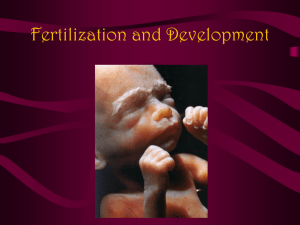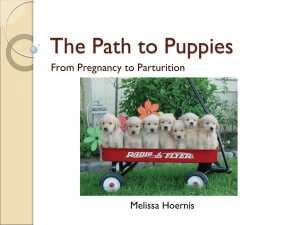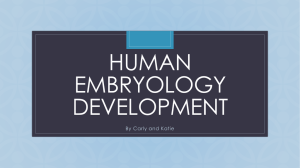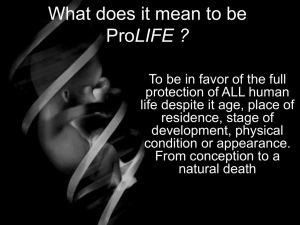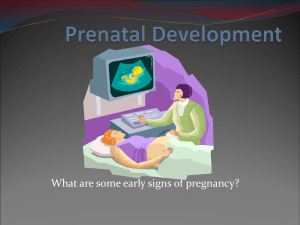Notes on Singer, Practical Ethics, chapters 5-7
advertisement
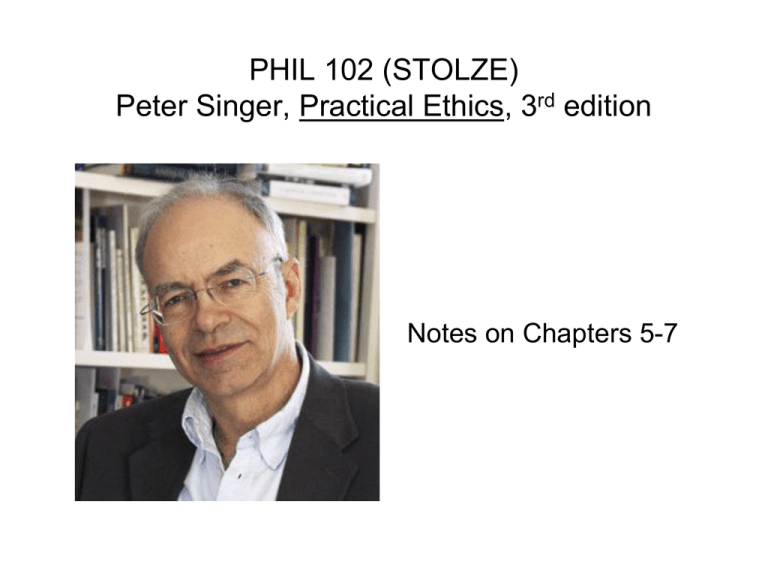
PHIL 102 (STOLZE) Peter Singer, Practical Ethics, 3rd edition Notes on Chapters 5-7 Chapter 5: Taking Life (Animals) • • • Can a nonhuman animal be a person (i.e., rational and self-aware)? The ethics of killing nonhuman persons The ethics of killing other animals Mental Time Travel “Not only philosophers…but also some scientists have argued that ‘mental time travel’ – the ability to imagine a future event – is unique to humans. As so often happens with attempts to draw lines between humans and animals, this one had to be stated in a very precise form in order to be at all plausible. Everyone who has a dog as a companion knows that the dog can anticipate going for a walk. The ability unique to humans is therefore said to be that of anticipating the future beyond one’s current set of motivations. So this claim is not refuted by a dog who brings her lead and puts it at the feet of her human companion. The dog, it is said, is simply in the grip of her desire to go for a walk and is acting on that desire. Humans, in contrast, can plan on satisfying motivations that they do not presently feel – as when we go shopping to make sure there will be something to eat for dinner, even though we are not hungry now. Many animals will hide food for future use, as squirrels do, but can it be shown that this involves conscious forethought, rather than purely instinctive behaviour?” (p. 98) Can a Nonhuman Animal be a Person? • • • Scientific evidence (by Frans de Waal, Jane Goodall, and others) for animal communication Hampshire’s objection: thinking requires the use of language The mirror test for self-awareness The Mirror Test “Self-awareness is sometimes linked to knowing that when you look in a mirror, you are seeing yourself rather than another being. This has been tested by putting a coloured dye on a part of the animal where it will be seen in the mirror but cannot be seen otherwise – for example, on an ape, the forehead. (The dye is put on when the animal is asleep so that she does not notice.) Then the animal is given a mirror, with which she has previously become familiar. If she looks in the mirror and then touches the dyed spot, this indicates that she knows that the image in the mirror is herself. All the great apes can pass the mirror test, but so too can elephants, dolphins and even magpies. Magpies belong to the crow family, as do scrub jays, which as we have already seen are capable of taking their future desires into account. Alex, an African gray parrot, who was taught a vocabulary of between fifty and one hundred words by Irene Pepperberg, understood concepts like ‘colour’ and ‘shape’ as well as ‘same’ and ‘different’. He did not take the mirror test, but Pepperberg’s meticulously recorded account of his abilities and behaviour leaves little doubt that he too was self-aware to some extent. Human children less than one year old typically fail the mirror test, but by the time they are eighteen months old, most can pass it” (pp. 101-2). Inconclusiveness of the Mirror Test “Passing the mirror test may show self-awareness, but failing it does not prove that an animal is not self-aware. In contrast to apes, monkeys do not show signs of selfrecognition, although some can learn to use mirrors to locate food that they cannot otherwise see. Dogs have not passed the mirror test, but that may be because they rely more on their sense of smell than on sight. Many people who live with dogs and cats are convinced that their animal companions are self-conscious and have a sense of the future. If dogs and cats qualify as persons, the mammals we use for food cannot be far behind. We think of dogs as being more ‘human’ than pigs, but we have already seen that pigs can plan ahead and grasp whether another pig does or does not know the location of food. Are we turning persons into bacon? Additionally, because at least some birds appear to be persons, we should be cautious about excluding chickens, too. In flocks of up to ninety birds, chickens appear to recognize one another as individuals, always knowing whether another bird is above or below them in the pecking order. They also have the capacity for self-control and to envisage at least the near future. In one experiment, chickens were taught that pecking one key would, after two seconds, bring them access to food for three seconds; whereas pecking a different key would, after six seconds, bring them access to food for twenty-two seconds. The hens preferred to wait for the opportunity to feed longer. At a more anecdotal level, many people who keep free range hens and lock them up at night describe them as eager to get outside in the mornings – an attitude that suggests anticipating the future” (p. 102). If You’re Not Sure—Don’t Shoot! “It is difficult to establish when another being has a sense of its own self, or of the past and the future. If it is wrong to kill a person when we can avoid doing so, and there is real doubt about whether a being we are thinking of killing is a person, the best thing to do is to give that being the benefit of the doubt. The rule here is the same as that among deer hunters: if you see something moving in the bushes and are not sure if it is a deer or a hunter, don’t shoot! (We may think that the hunters shouldn’t shoot in either case, but the rule is a sound one within the ethical framework that hunters use.) On these grounds, much killing of nonhuman animals is open to objection. It may be justifiable of course, for overriding reasons, but it is in need of justification” (p. 103). Moral Obligation along a Continuum “Accepting these differences between normal mature humans and nonhuman animals, we could see the wrongness of killing, not as a black and white matter, dependent on whether the being killed is or is not a person, but as a matter of degree, dependent on, among other things, whether the being killed was fully a person or was a near-person or had no selfawareness at all, the extent to which, by our best estimate, the being had future-directed desires, and how central those desires were to the being’s life. The criminal law can reasonably take a different view on the grounds that public policy is better served by laws that draw sharp boundaries, but the relevant moral considerations suggest a continuum” (p. 104). Killing Other Animals • • The Prior Existence View = “it is wrong to kill any being whose life is likely to contain, or can be brought to contain, more pleasure than pain. This view implies that it is normally wrong to kill animals for food, because usually we could argue that these animals would have had a few pleasant months or even years before they died – and the pleasure we get from eating them would not outweigh this” (p. 105) The Total View, or The Replaceability Argument = “if we kill one animal, we can replace it with another as long as that other will lead a life as pleasant as the one killed would have led, if it had been allowed to go on living” (p. 106). Singer’s Three Responses to the Replaceability Argument • • • “[E]ven if it is valid when the animals in question have pleasant lives, it would not justify eating the flesh of animals reared in modern factory farms, where the animals are so crowded together and restricted in their movements that their lives seem to be more of a burden than a benefit to them” (p. 106). “[I]f it is good to create happy life, then presumably it is good for there to be as many happy beings on our planet as it can possibly hold” (p. 106). “[I]f replaceability holds for animals, it must hold for humans at a similar mental level” (p. 106). Thought Experiment #1: Organ Banking “Suppose that whenever a child is born, the parents are offered the option of creating a clone of their child to serve as an organ donor for the child later in life. The clones are gestated in artificial wombs and then reared separately from other human beings in order to prevent the parents becoming so attached to them that they will be reluctant to remove the clone’s organs. While in embryonic form, the clones are genetically modified so that their mental abilities never develop beyond those of a human infant. Intellectually incapable of understanding their fate, they will lead lives similar to those of happy, wellcared-for infants until the time comes for them to be killed – humanely, of course. Their hearts and other organs are then used to prolong the lives of the children – now usually adults – from whom they were cloned. Those who receive the organs pay for them, and the revenue from these sales makes it possible to rear new clones from the next generation of babies. Suppose that there is one religious group, let’s say Buddhism, that objects to this practice, refuses to use clones, and urges us to accept the idea of living a natural lifespan, which Buddhists see as ethically better than using organs from clones to prolong our lives. To…[someone] might reply: ‘Of all the arguments for a natural lifespan, none is so weak as the argument from humanity. The clone has a stronger interest than anyone in the demand for organs. If all the world were Buddhist, there would be no clones at all.’ Given our earlier rejection of speciesism, it isn’t easy to see how we can use the replaceability argument to defend meat eating without also accepting it as a defence of this form of organ banking” (pp. 106-7). Thought Experiment #2: Two Possible Universes “Consider two different universes. In the Nonsentient Universe, there is never any sentient life at all. In the Peopled Universe, there are several billion self-aware beings. They lead rich and full lives, experiencing the joys of love and friendship, of fulfilling and meaningful work, and of bringing up children. They seek knowledge, successfully adding to their understanding of themselves and the universe they inhabit. They respond to the beauties of nature, cherish the forests and animals that pre-date their own existence, and create literature and music that is on a par with the works of Shakespeare and Mozart. They manage to prevent or relieve many forms of suffering, but they are mortal and are not able to satisfy all their desires. Is it better that the Peopled Universe exist rather than the Nonsentient Universe?” (p. 116) Chapter 6: Taking Life (Abortion) • • • • • • • • • The Ethical Problem “Conservative” Positions “Liberal” Positions The Value of Fetal Life The Fetus as a Sentient Being The Fetus as Potential Life Two More Arguments against Abortion The Status of the Embryo in the Laboratory Abortion and Infanticide Possible Moral Dividing Lines along the Continuum of Embryonic/Fetal Development • • • • Birth Viability Quickening Consciousness The Central Argument against Abortion 1. It is wrong to kill an innocent human being. 2. A human embryo/fetus is an innocent human being. 3. Therefore, it is wrong to kill a human embryo/fetus. A Revised Version of the Central Argument against Abortion 1. It is wrong to kill an innocent person. 2. A human embryo/fetus is an innocent person. 3. Therefore, it is wrong to kill a human embryo/fetus. The Argument from Potentiality 1. It is wrong to kill a potential human being. 2. A human embryo/fetus is a potential human being. 3. Therefore, it is wrong to kill a human embryo/fetus. Some Liberal Arguments • • • The Consequences of Restrictive Laws Not the Law’s Business A Feminist Argument (Judith Jarvis Thompson’s Violinist Analogy) The Right to Choose Argument 1. A woman has the moral right to choose what happens to her own body. 2. The embryo/fetus is a part of a woman’s body. 3. Abortion is a justifiable exercise of a woman’s right to choose. 4. Therefore, a woman has the moral right to abortion. Abortion and Infanticide “There remains one major objection to the argument I have advanced in favour of abortion. We have already seen that the strength of the conservative position lies in the difficulty liberals have in pointing to a morally significant line of demarcation between an embryo and a newborn baby. The standard liberal position needs to be able to point to some such line, because liberals usually hold that it is permissible to kill an embryo or fetus but not a baby. I have argued that the life of a fetus (and even more plainly, of an embryo) is of no greater value than the life of a nonhuman animal at a similar level of rationality, self-awareness, capacity to feel and so on, and that because no fetus is a person, no fetus has the same claim to life as a person. Now we have to face the fact that these arguments apply to the newborn baby as much as to the fetus. A week-old baby is not a rational and self-aware being, and there are many nonhuman animals whose rationality, self-awareness, capacity to feel and so on, exceed that of a human baby a week or a month old. If, for the reasons I have given, the fetus does not have the same claim to life as a person, it appears that the newborn baby does not either. Thus, although my position on the status of fetal life may be acceptable to many, the implications of this position for the status of newborn life are at odds with the virtually unchallenged assumption that the life of a newborn baby is as sacrosanct as that of an adult” (p. 151). Chapter 7: Taking Life (Euthanasia) • • • • • • Three Forms of Aid in Dying Justifying Infanticide and Nonvoluntary Euthanasia Justifying Voluntary Euthanasia Not Justifying Involuntary Euthanasia Active and Passive Euthanasia The Slippery Slope: From Euthanasia to Genocide? Three Forms of Aid in Dying • • • Voluntary Euthanasia Involuntary Euthanasia Nonvoluntary Euthanasia
